Publications
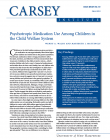
January 22, 2013
Prior research demonstrates that children in the child welfare system are given psychotropic medication at rates approximately three times higher than children and adolescents in the general population.
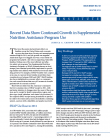
January 15, 2013
This brief uses data from the American Community Survey to examine rates of Supplemental Nutrition Assistance Program (SNAP) receipt in 2011, with particular attention to changes since the onset of the recession, and to receipt by family composition, region, and place type (rural, suburban, and central city locations).
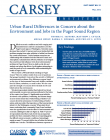
December 18, 2012
Using data from a phone survey of 1,980 Puget Sound residents conducted in 2012, this fact sheet examines the severity of different environmental problems and compares the strength of concern about the lack of jobs and beliefs about the environment. Too few jobs and the loss of wildlife habitat were the two community issues most likely to be ranked as important problems among residents of Puget…

December 18, 2012
Using data from a phone survey of 1,980 Puget Sound residents conducted in 2012, this fact sheet describes public perceptions of different environmental interventions. Puget Sound residents widely support a range of proposed interventions designed to protect and restore the marine environment.
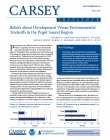
December 18, 2012
Using data from a phone survey of 1,980 Puget Sound residents conducted in 2012, this fact sheet outlines residents’ views about the importance of environmental protection as well as their opinions about energy development, protection of wild salmon, and land use regulation.
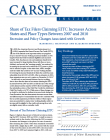
December 11, 2012
In this brief, Authors Beth Mattingly and Elizabeth Kneebone use Internal Revenue Service tax filing data to show that the share of tax returns claiming the Earned Income Tax Credit (EITC) increased between 2007 and 2010, as did the size of the average credit claimed and the number of EITC filers benefitting from the refundable portion of the Child Tax Credit (the Additional Child Tax Credit,
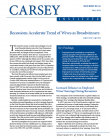
December 4, 2012
This brief, Recessions Accelerate Trend of Wives as Breadwinners, investigates the increased role employed wives played in family economic stability prior to, during, and in the two years after the Great Recession, and makes comparisons to the 1990-1991 and 2001 recessions.
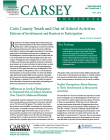
November 27, 2012
This fact sheet draws from surveys administered to a cohort of 416 participants in 7th grade in 2008, again when they were in 8th grade in 2009, and most recently as 10th graders in 2011 to look at patterns of participation in structured activities over time and whether male and female students differ in these patterns of participation.
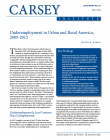
November 13, 2012
Author Justin Young reports that underemployment (or involuntary part-time work) rates doubled during the second year of the recession, reaching roughly 6.5 percent in 2009. This increase was equally steep in both rural and urban places. By March of 2012, underemployment was slightly lower in rural places (4.8 percent) compared to urban places (5.3 percent).
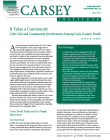
October 16, 2012
This brief explores the extent to which Coös County youth are involved in a variety of civic-related activities, with particular attention to the demographic and attitudinal factors associated with such participation. Author Justin Young reports that approximately 75 percent of Coös County youth report involvement in at least one type of civic-related activity.
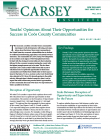
September 25, 2012
This fact sheet examines Coös County youths’ beliefs about their access to educational and occupational opportunities in their home communities and whether these beliefs relate to their expectations for the future. To do so, author Erin Hiley Sharp draws on the Coös Youth Study data collected in 2011 from 318 eleventh graders in the public schools.
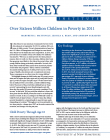
September 20, 2012
UPDATE: This brief has been updated to include revised versions of Figure 1 (page 2) and Appendix 1 (page 6). The original version of this brief overestimated the statistical significance of some state-level changes in child poverty between 2010 and 2011, and has been revised accordingly.
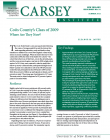
July 31, 2012
This brief reports on the first follow-up survey of the Coös Youth Study participants beyond high school. The focus of the Coös Youth Study, a ten-year panel study following the lives of youth in Coös County, New Hampshire, is the transition of Coös youth into adulthood.
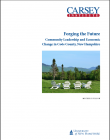
July 24, 2012
Author Michele Dillon conducted a case study of community change in Coös County, New Hampshire, for two-and-a-half years (June 2009-December 2011) to investigate how local community leaders in Coös assess the initiatives, challenges, opportunities, and progress in the North Country during this time of economic transition.
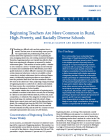
July 17, 2012
This brief considers whether the concentration of beginning teachers in a district is associated with the district's poverty rate, racial composition, or urbanicity.

June 19, 2012
In this brief, authors Suzanne Graham and Lauren Provost examine whether attending a school in a rural, urban, or suburban community is related to children’s mathematics achievement in kindergarten, and whether increases in mathematics achievement between kindergarten and eighth grade differ for children in rural, urban, and suburban schools.
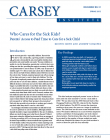
June 12, 2012
This brief analyzes employed parents’ access to five or more paid sick days annually to care for a sick child in 2008.
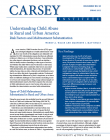
May 30, 2012
Using a large national sample of child maltreatment reports, this brief compares the outcomes of child maltreatment cases in rural versus urban places and identifies the characteristics associated with substantiation. Child abuse cases substantiated in rural and urban areas share many caregiver risk factors, such as drug and alcohol abuse, and many family stressors.
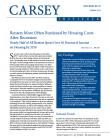
May 22, 2012
This brief uses data from the 2007 and 2010 American Community Survey to document changes in the proportion of household income spent on rental costs (rent plus utilities) during the Great Recession, by region (Northeast, Midwest, South, and West) and place type (rural, suburban, or central city location).
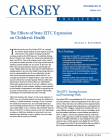
May 15, 2012
This brief examines the impact of state-level adoption of Earned Income Tax Credits (EITCs) on a set of health-related outcomes for children, including: (1) health insurance coverage, (2) use of preventive medical and dental care, and (3) health status measures including maternal reports of child health and body mass index.
